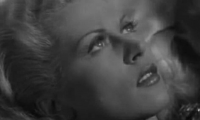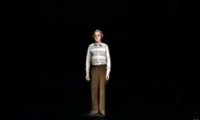I want to watch things that are essentially filmic or whose nature is nonverbal, that can’t be recreated on the page. I spend so much time immersed in words and consciousness created through words that sometimes I long to escape. I mean I love words, and I love the worlds that fiction can create through words, but there are moments when I want something other, the visual, physical, corporeal, and these three clips confirm for me something about this different order of experience.
For some peculiar reason, each one suggested the next and so I offer them up as a sequence, as journey. I’m calling them clips because they’re taken from other whole things (films, dance) but, I hope, become altered in this new context. Anyway, that’s the idea.
For the first, I’m indebted to filmmaker Patricia Rozema, who showed it to me. It’s a sequence from the end of the Theodoros Angelopoulos movie, “The Suspended Step of the Stork.” After I watched it once, I couldn’t stop thinking about it, or re-watching it. It seemed something that could only exist in film or as film: Stripped of narrative, the long shot becomes wholly spatial in its repetitions. The camera creates the movement because it’s the camera itself that moves and creates a visual rhyme, a rhyme of the body, of bodies. A body in white, white bodies against the sky and in the sky. I won’t say more because the whole point is its surprise.
Theodoros Angelopoulos, “The Suspended Step of the Stork” (1991)
Which led me to this excerpt from Mohsen Makhmalbaf’s “Kandahar,” a movie I love. Keep watching this one: The scene in the camp for amputees, a camp in the desert filled with one-legged men searching for missing limbs, is merely the set-up for the sequence with which the clip ends. At which point again we again fall out of narrative into moving image: a repetition of hopping one-legged men, mysterious objects floating down from the sky — bodies attached to parachutes, or … well, watch it and see. The moving image itself becomes heart-rending.
Mohsen Makhmalbaf, “Kandahar” (2001)
Which led me to Merce Cunningham. Whose dance I love because it’s profoundly non-mimetic. It doesn’t try to refer or represent or tell a story, it just is. The whole point is to embody, to commit to gesture in the moment, to be present. The conviction the dancer brings to every gesture creates presence. Of course you only get real presence when seeing Cunningham’s dancers on stage. And yet even on film, we hear the dancers’ breath, the slap of feet. Our depth of field is altered. Three dance sequences are juxtaposed in a way they couldn’t be in life. And look, in the last sequence, out through the window. Not a trick of the eye: not ghost but trace.
Eliot Caplan, Merce Cunningham, “Changing Steps” (1990)
– Catherine Bush




